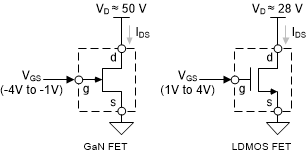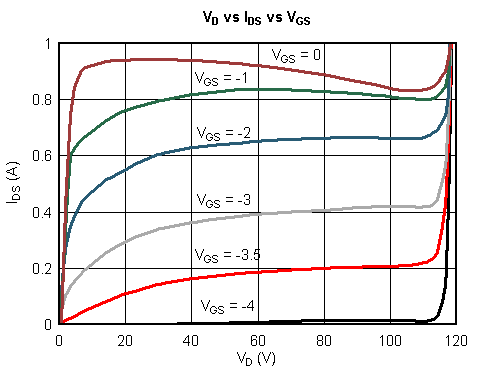SLAA946 April 2021 AFE10004
1 LDMOS and GaN Power Amplifier FET Basics
Most RF antenna systems feature power amplifiers (PA) for their transmitter design. These antenna systems include:
Power amplifier biasing circuits are implemented in these systems to ensure two things: first, that the power output of the amplifier is known and controlled, and second, that the system is powered on and off safely to reduce the risk of damaging the PA. Power amplifiers are commonly created with either gallium nitride (GaN) or laterally diffused MOSFET (LDMOS) transistors. Power output in both GaN and LDMOS FETs (field-effect transistors) is dependent on the current that flows through the device from the drain to the source (IDS).
 Figure 1-1 GaN and LDMOS FETs
Figure 1-1 GaN and LDMOS FETsThe IDS current is determined by a few variables: the drain voltage (VD), the gate voltage (commonly called VGS), and temperature. Figure 1-2 shows an example of IDS values against the drain voltage for a selection of VGS voltages for a GaN FET. The higher VGS voltages result in a higher IDS, or more power from the amplifier. When the VGS voltage is sufficiently low, the FET allows virtually zero IDS current. This VGS voltage is called the pinch-off voltage. IDS is also dependent on the drain voltage, but most designers do not vary the VD. Instead, designers use optimized VD voltages for the desired power levels. The VD values are usually about 50 V for GaN FETs and 28 V for LDMOS FETs.
 Figure 1-2 FET VD, IDS, and VGS Behavior
Figure 1-2 FET VD, IDS, and VGS Behavior